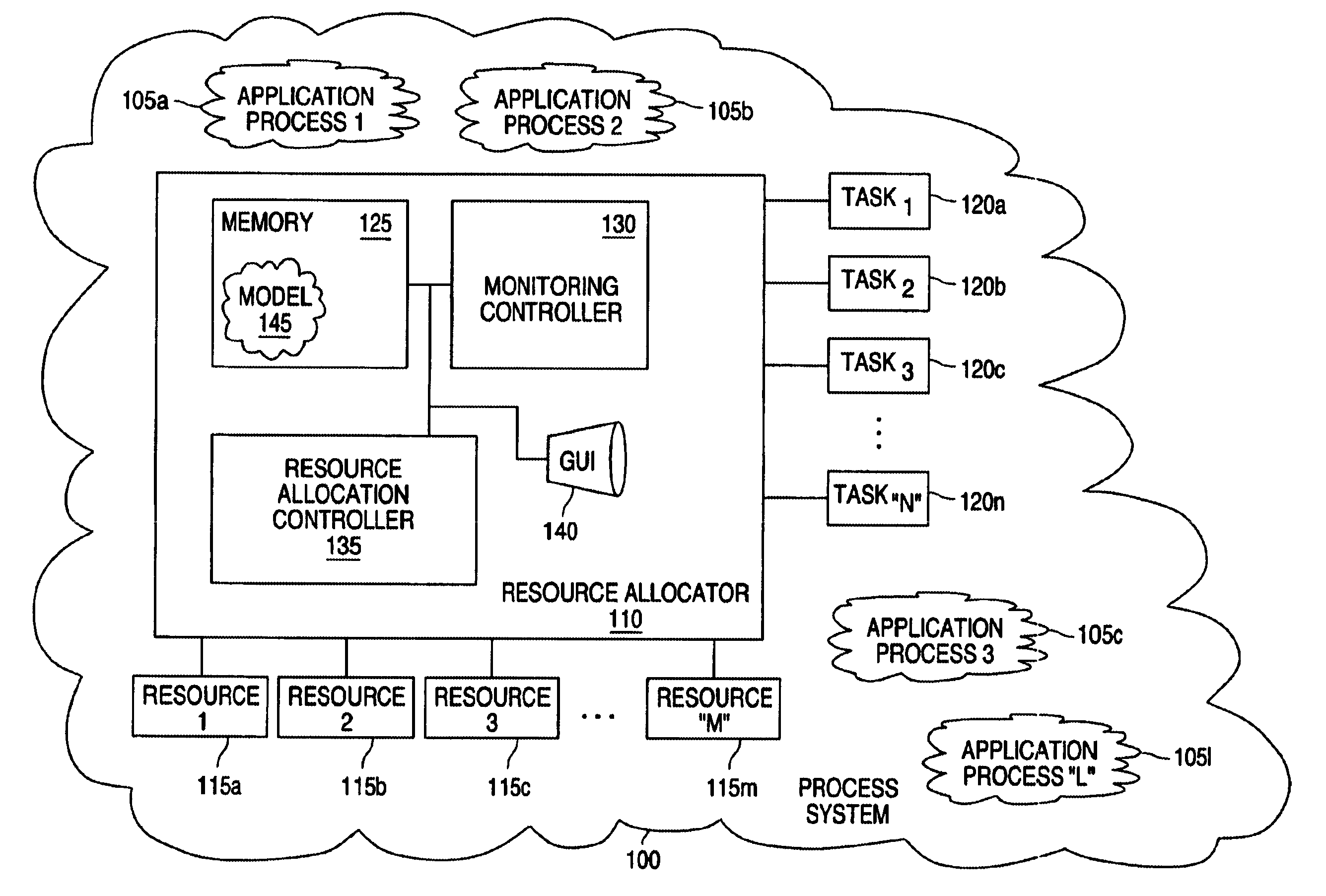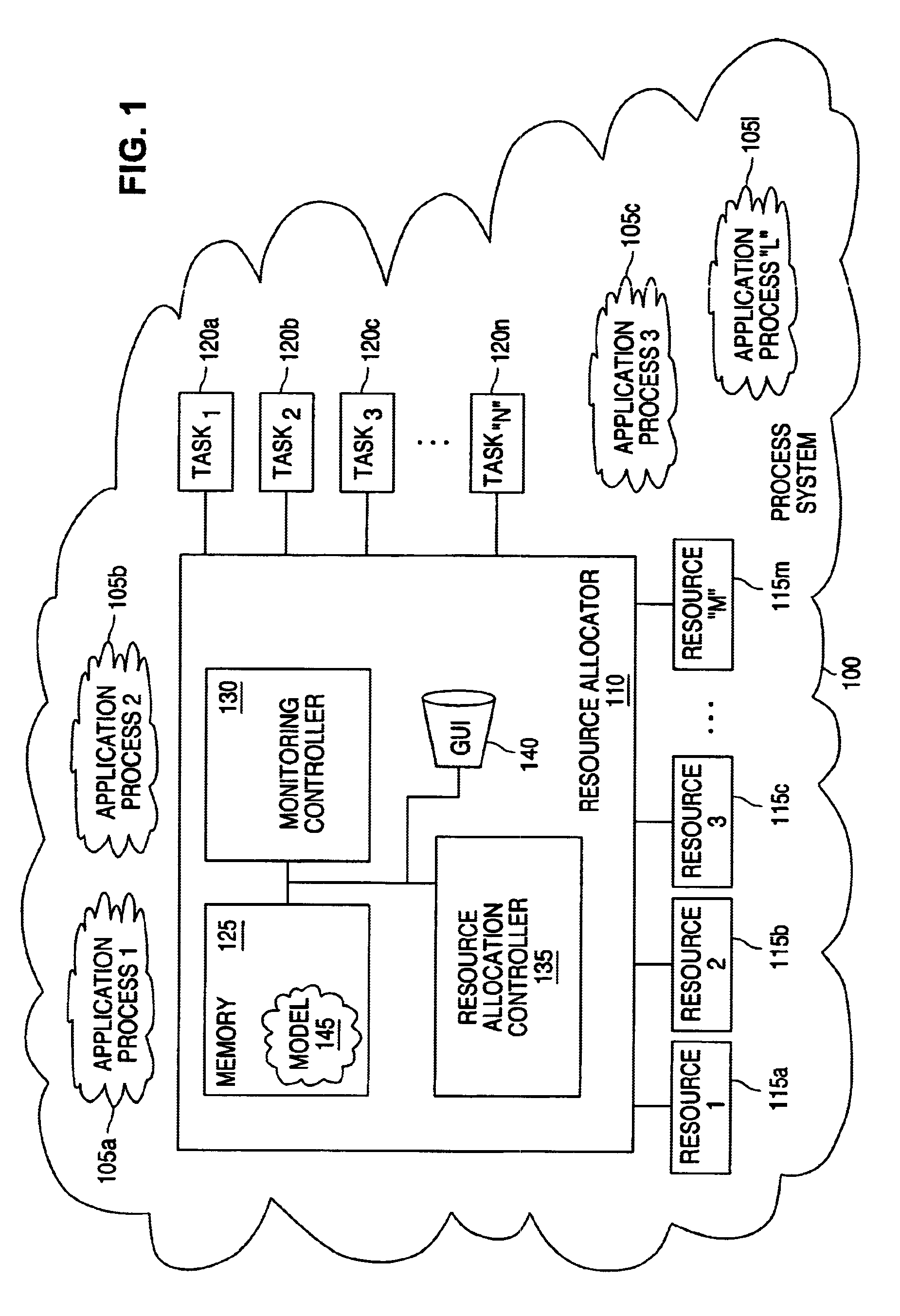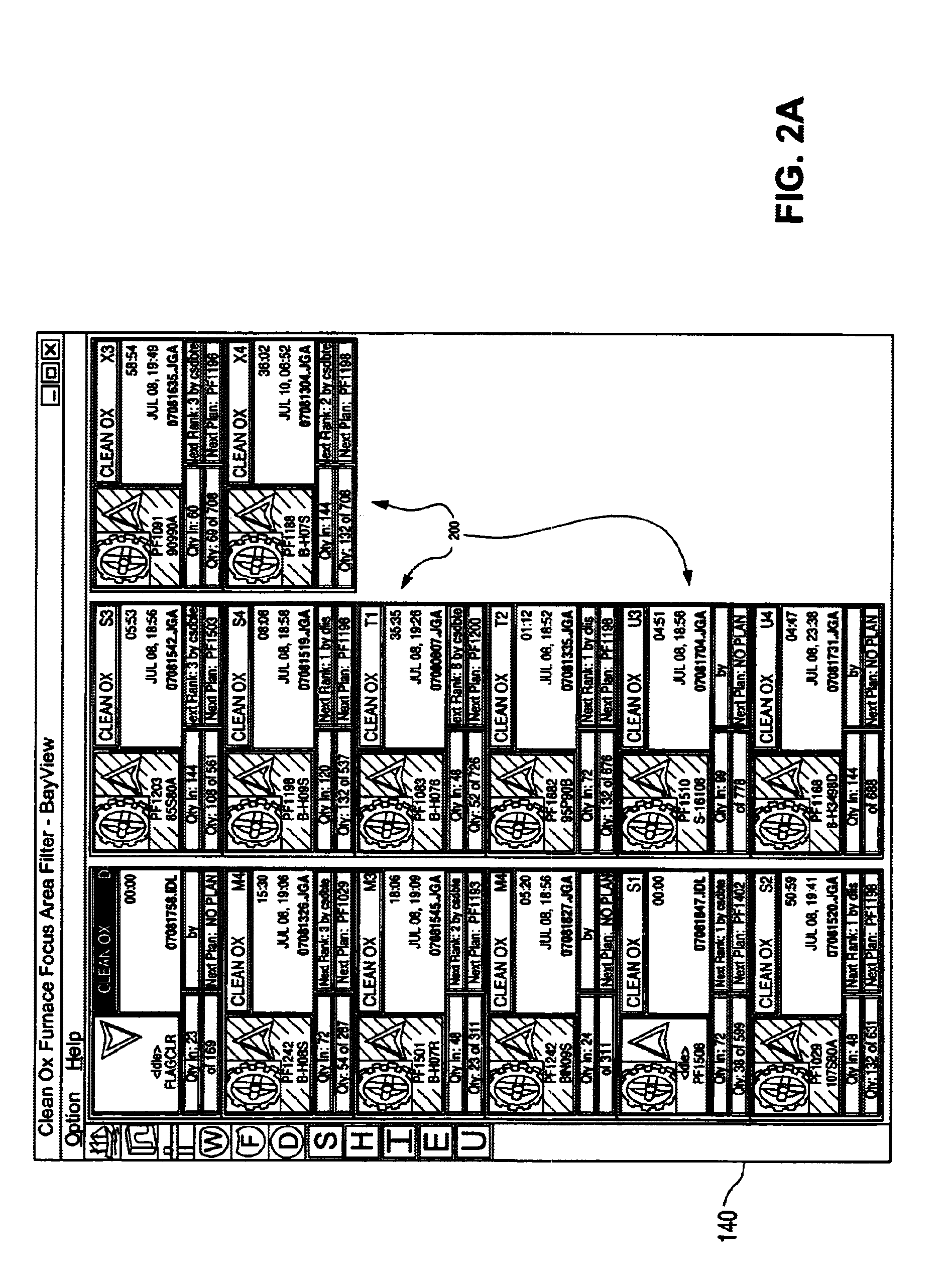Graphical user interface for allocating multi-function resources in semiconductor wafer fabrication and method of operation
a multi-functional resource and semiconductor wafer technology, applied in the field of resource allocation systems and process control systems, can solve the problems of failing to model and factor in the optimization effort both status and logistical data, unable to cooperatively optimize process resources, and approaches that exhibit poor response, so as to reduce load conflict, facilitate supervisory interaction, and efficiently execute
- Summary
- Abstract
- Description
- Claims
- Application Information
AI Technical Summary
Benefits of technology
Problems solved by technology
Method used
Image
Examples
Embodiment Construction
, it may be advantageous to set forth a definition of certain words and phrases used throughout this patent document: the terms “include” and “comprise,” as well as derivatives thereof, mean inclusion without limitation; the term “or,” is inclusive, meaning and / or; the phrases “associated with” and “associated therewith,” as well as derivatives thereof, may mean to include, be included within, interconnect with, contain, be contained within, connect to or with, coupled to or with, be communicable with, cooperate with, interleave, juxtapose, be proximate to, be bound to or with, have, have a property of, or the like; the term “memory” means any storage device, combination of storage devices, or part thereof whether centralized or distributed, whether locally or remotely; and the terms “controller,”“processor” and “allocator” mean any device, system or part thereof that controls at least one operation, such a device, system or part thereof may be implemented in hardware, firmware or s...
PUM
 Login to View More
Login to View More Abstract
Description
Claims
Application Information
 Login to View More
Login to View More - R&D
- Intellectual Property
- Life Sciences
- Materials
- Tech Scout
- Unparalleled Data Quality
- Higher Quality Content
- 60% Fewer Hallucinations
Browse by: Latest US Patents, China's latest patents, Technical Efficacy Thesaurus, Application Domain, Technology Topic, Popular Technical Reports.
© 2025 PatSnap. All rights reserved.Legal|Privacy policy|Modern Slavery Act Transparency Statement|Sitemap|About US| Contact US: help@patsnap.com



